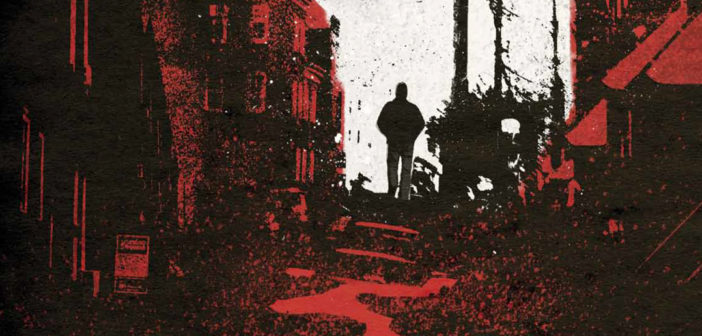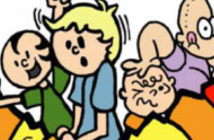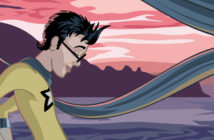The zombie genre is inescapably ouroboric—it always returns to its apocalyptic origins of representing the impending death of humanity and the inescapable end of the world. This theme is the genre’s sacred cow, and whether wittingly or not, I have yet to discover a creator who has stood up and courageously defied it. Who knows: perhaps this very formula is what all of the fuss is about, but it’s no secret that I’ll take a pass.
Make no mistake—of every movie I’ve seen and every comic I’ve read dedicated to the decaying and shambling undead, Nick Tapalansky and Alex Eckman-Lawn’s Awakening is by far the best. It triumphs where so many stories utilizing the genre have failed—it’s more concerned about the people who are alive rather than dead. Yes, I know, zombie fans all have their own biblical text that symbolizes why they love this tired and tedious brand so much, but time and again, all I ever wanted to do was bang my head against the wall rather than endure one more page or one more minute of screen time. “Why does anyone like this stuff!?” I have asked myself time and again.
But that’s not the scenario with Awakening, because for a horror comic book about zombies, there really aren’t too many zombies to see. Oh yes, we hear about them, but they’re obscure foils always haunting the background; they rarely pollute the main thrust of the plot. This is because writer Tapalansky is editorializing the genre as much as he is offering his own spin on it.
Zombies aside, the plot of Awakening is driven forward by a police procedural. The first volume introduced the main character, Derrick Peters, a hardboiled private investigator who once carried a detective shield for Park Falls, an every-town. Derrick is turned onto a series of murders that are just as mysterious as they are odd: the victims are chewed and feasted upon to death. The rants of local temp worker Cynthia Ford decry the murderous culprit as a zombie produced by Cline Pharmaceuticals.
She’s insane, of course, but Derrick still can’t get his voice out of her head. As he investigates the murders more closely, he meets a host of characters that add a reflective hue to the book’s collective personality: Dr. Howe, a federal investigator and medical professional reminiscent of Agent Dana Scully from The X-Files; Sandra, a troubled Catholic who filters the strange happenings of Park Falls through her lapse in religion; and Charlie, Derrick’s old partner on the force who has a rather sordid past.
Readers of the first volume know this story already. Any mention of the undead is a mere whisper throughout the book’s pages. The stunning artwork of Eckman-Lawn is sketchy, sloppy, and deceptively beautiful. His images twist the book’s atmosphere into a distorted fever dream where fact is fiction and fiction is fact. The hazy artwork is further amplified by Eckman-Lawn’s brilliant use of photo-realistic fumetti juxtaposed behind his illustrations. These images lead me to believe that he has the keen eye of a photographer, because he uses the spookiest shots of aging factories, weathered churches, and empty alleys that the imagination can capture.
Of Tapalansky’s many skills as a writer, pacing is his greatest ally. He controls his story with a meticulous beat, allowing it to unfold at just the right speed. In the first volume of the book, he adeptly juggles several plot threads, giving each enough attention so that it is worthwhile and purposeful to the overall story.
I’ve spent a lot of time talking about Awakening in general, and not really focusing much on the second volume in particular. But they’re inseparable—a true continuation.
But the major difference between the two books is the direction of the story. While the first is most definitely a noir tale first and a zombie thriller second, volume two shifts the story towards the unavoidable roots of the zombie genre—and this saddened me somewhat. I won’t say what happens, but it should be noted that Tapalansky flirts with too much formula in the second half of the book, betraying what he established in the first installment.
We see a lot more zombies, the world is dying, and the end is near. What happened to the police procedural? Where is the grizzled investigator trying to make sense of the madness when he thought he saw it all? All of those wonderful elements that defined the first volume slip away in the story’s sequel.
Understand what I am saying: the second volume of Awakening is a fine book that demonstrates the talent of both its writer and artist. But it bows to formula in the end, whereas I yearned for the moxie and daring of the first book. This latest installment shouldn’t be missed by fans, but it ultimately made me appreciate the original more.
This comic book review originally appeared on Broken Frontier.




